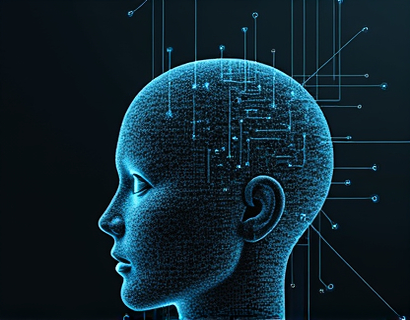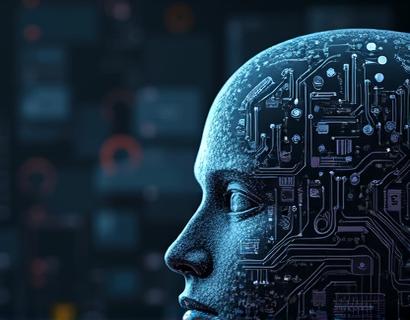UX Design Trends 2025: Mastering Transformation Through Expert Strategies and Insights
In the ever-evolving landscape of digital design, staying ahead of the curve is crucial for success. The field of User Experience (UX) design is no exception, with new trends and strategies emerging annually to enhance user satisfaction and drive digital success. This comprehensive guide delves into the key UX design trends for 2025, offering expert strategies and practical tips to transform your UX design practice. Whether you are a seasoned professional or just starting out, this article aims to provide valuable insights to elevate your projects and foster a deeper understanding of what it takes to create impactful digital products.
Understanding the User Journey
The foundation of any successful UX design is a deep understanding of the user journey. In 2025, the focus remains on creating seamless and intuitive experiences that cater to the diverse needs of users. One of the most significant trends is the adoption of journey mapping as a core tool in the design process. Journey maps help designers visualize and empathize with users at every stage of their interaction with a product, from initial awareness to post-usage reflections. By mapping out these journeys, designers can identify pain points and opportunities for improvement, ensuring that each touchpoint is optimized for user satisfaction.
Another critical aspect is the integration of contextual research. This involves observing users in their natural environments to gain insights into their behaviors and motivations. Contextual research provides a richer, more authentic understanding of user needs compared to traditional methods like surveys or interviews. By incorporating this approach, designers can create more relevant and effective solutions that resonate with users on a deeper level.
Personalization and Adaptive Design
Personalization has become a cornerstone of modern UX design, and 2025 sees this trend intensifying. With the vast amount of data available, designers have the tools to create highly personalized experiences that cater to individual preferences and behaviors. Dynamic content and adaptive interfaces are at the forefront of this movement, allowing websites and applications to adjust in real-time based on user interactions and data. This not only enhances user engagement but also increases conversion rates and overall satisfaction.
To implement effective personalization, designers must focus on data-driven design. This involves leveraging analytics and user data to inform design decisions. By analyzing user behavior and preferences, designers can tailor experiences that feel intuitive and relevant. For instance, using machine learning algorithms to recommend products or content based on past interactions can significantly improve user engagement and loyalty.
Accessibility and Inclusivity
Accessibility and inclusivity are no longer optional considerations but essential components of UX design. The 2025 trends emphasize the importance of creating digital products that are usable by everyone, regardless of ability or disability. Inclusive design practices ensure that products are accessible to a wider audience, including those with visual, auditory, motor, or cognitive impairments. This not only expands the potential user base but also aligns with ethical design principles and legal requirements in many regions.
To achieve this, designers should adopt universal design principles, which aim to make products usable by all people, to the greatest extent possible, without the need for adaptation or specialized design. This includes using clear and simple language, providing alternative text for images, ensuring keyboard navigability, and adhering to WCAG (Web Content Accessibility Guidelines) standards. By prioritizing accessibility, designers can create more inclusive and user-friendly experiences.
Voice User Interface (VUI) Design
The rise of smart speakers, virtual assistants, and voice-activated devices has propelled VUI design to the forefront of UX trends in 2025. As more users interact with digital products through voice commands, designers must adapt their approaches to create seamless and natural voice interactions. Conversational design is key, focusing on crafting dialogues that feel natural and intuitive, much like human conversation.
One of the challenges in VUI design is understanding the nuances of voice interactions, such as context, intent, and emotional tone. Designers need to conduct voice user research to gather insights into how users interact with voice interfaces. This research can inform the creation of effective voice personas and scenarios, ensuring that the voice interactions are designed with the user in mind. Additionally, iterative testing of voice interfaces is crucial to refine and optimize the user experience.
Microinteractions and Feedback
Microinteractions, small and focused interactions designed to enhance user experience, have gained significant traction in 2025. These subtle yet impactful elements provide immediate feedback to users, making interactions feel more responsive and satisfying. Examples include loading animations, button press effects, and confirmation messages. By incorporating well-designed microinteractions, designers can improve user engagement and reduce frustration.
To effectively use microinteractions, designers should focus on clarity and consistency. Each microinteraction should clearly communicate the result of a user's action and align with the overall design language of the product. Consistency in design and behavior across different interactions helps build trust and familiarity, enhancing the overall user experience. Tools like Figma and Adobe XD offer robust features for prototyping and testing microinteractions, allowing designers to refine their designs before implementation.
Sustainable Design
Sustainability is becoming an increasingly important consideration in UX design. As users and businesses alike become more conscious of their environmental impact, there is a growing demand for sustainable design practices. This trend involves creating digital products that are not only functional and user-friendly but also environmentally responsible. One way to achieve this is by optimizing for performance and efficiency, reducing load times and resource consumption. Faster loading times not only enhance user experience but also decrease the carbon footprint of digital products.
Another aspect of sustainable design is digital minimalism, which advocates for simplicity and functionality over unnecessary features and aesthetics. By stripping away excess and focusing on essential elements, designers can create products that are easier to use and maintain, reducing the need for frequent updates and resource-intensive designs. This approach not only benefits the environment but also improves user satisfaction by providing a clean and uncluttered experience.
AI and Machine Learning in UX Design
The integration of AI and machine learning into UX design is revolutionizing the way designers create and optimize digital products. These technologies offer powerful tools for automating tasks, personalizing experiences, and gaining deeper insights into user behavior. In 2025, designers are leveraging AI to enhance various aspects of the design process, from content generation to user testing.
One of the most exciting applications of AI in UX design is predictive analytics. By analyzing user data, AI algorithms can predict user behavior and preferences, enabling designers to proactively address needs and improve the user journey. For example, AI can help identify patterns in user interactions that lead to higher engagement or conversion rates, allowing designers to make data-driven decisions to optimize these areas. Additionally, AI-powered chatbots and virtual assistants can provide personalized support and guidance, enhancing the overall user experience.
To effectively incorporate AI into UX design, designers should collaborate with data scientists and developers to ensure that AI solutions are integrated seamlessly and ethically. Transparency and user control are crucial, as users should have the option to understand and manage how their data is used. By embracing AI responsibly, designers can unlock new possibilities for creating innovative and user-centric digital products.
Conclusion
As we conclude this exploration of the key UX design trends for 2025, it is clear that the field is rapidly evolving, driven by technological advancements and changing user expectations. By embracing trends such as journey mapping, personalization, accessibility, VUI design, microinteractions, sustainable design, and AI, designers can transform their UX practices and drive digital success. These strategies and insights not only enhance user satisfaction but also position designers to stay ahead in an increasingly competitive landscape. Whether you are just starting your UX journey or looking to refine your existing approach, these trends offer valuable guidance to create impactful and user-centered digital products.











































